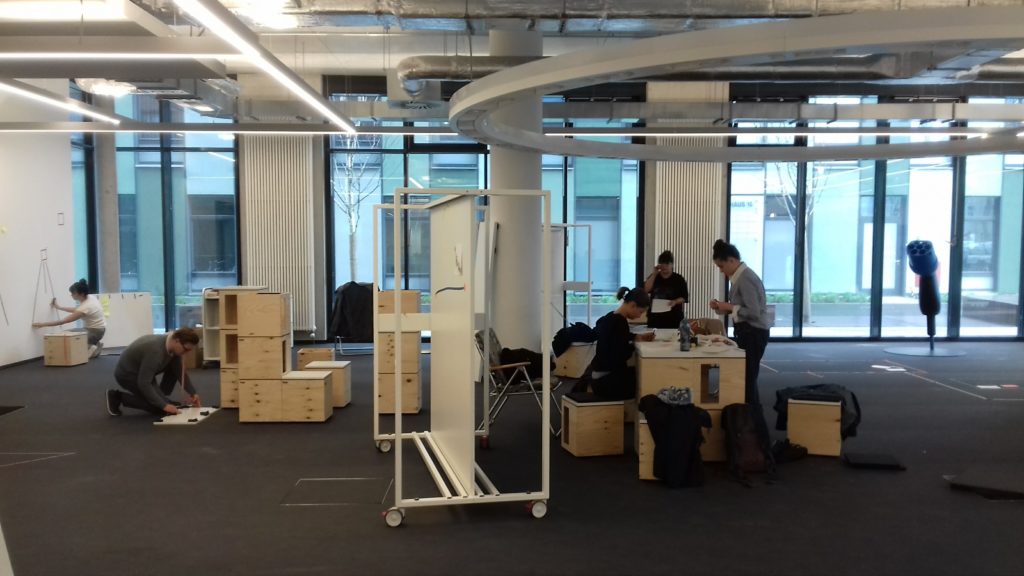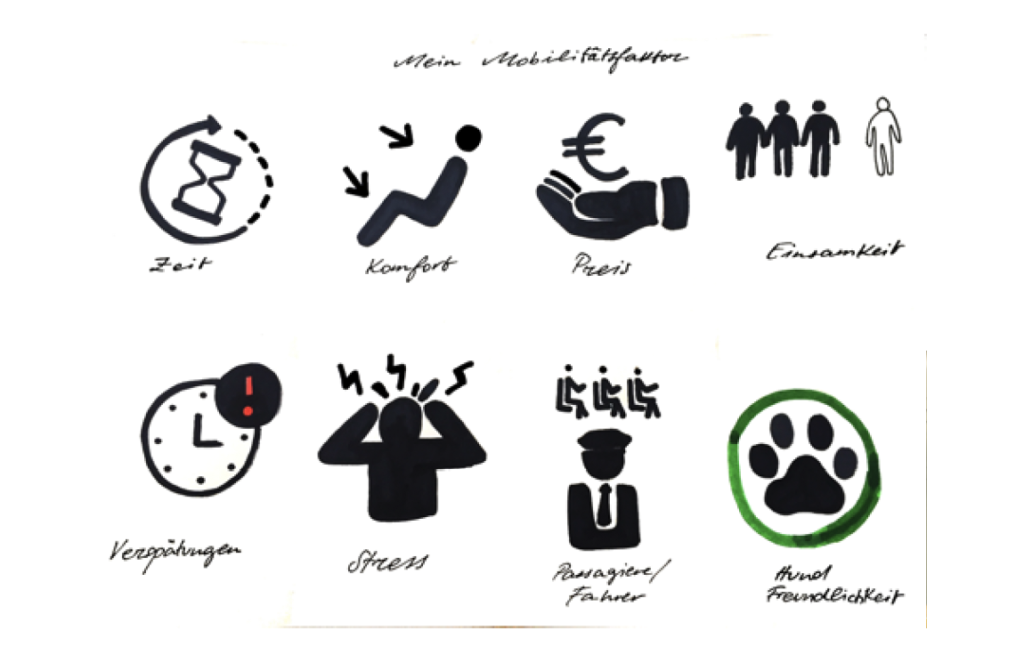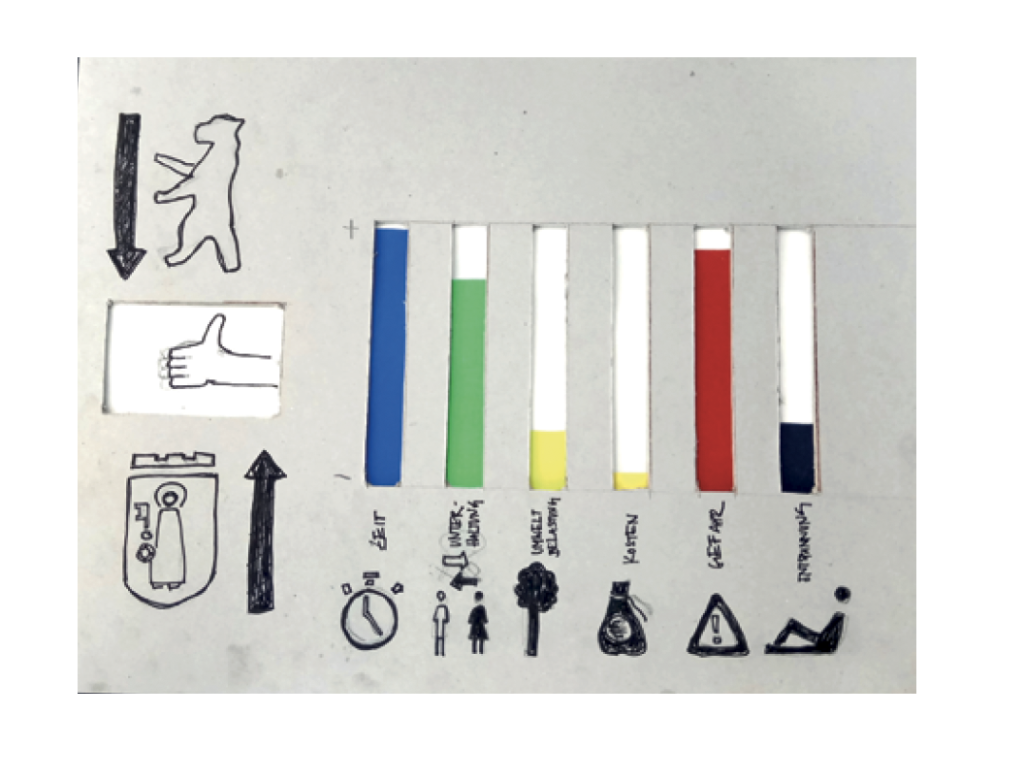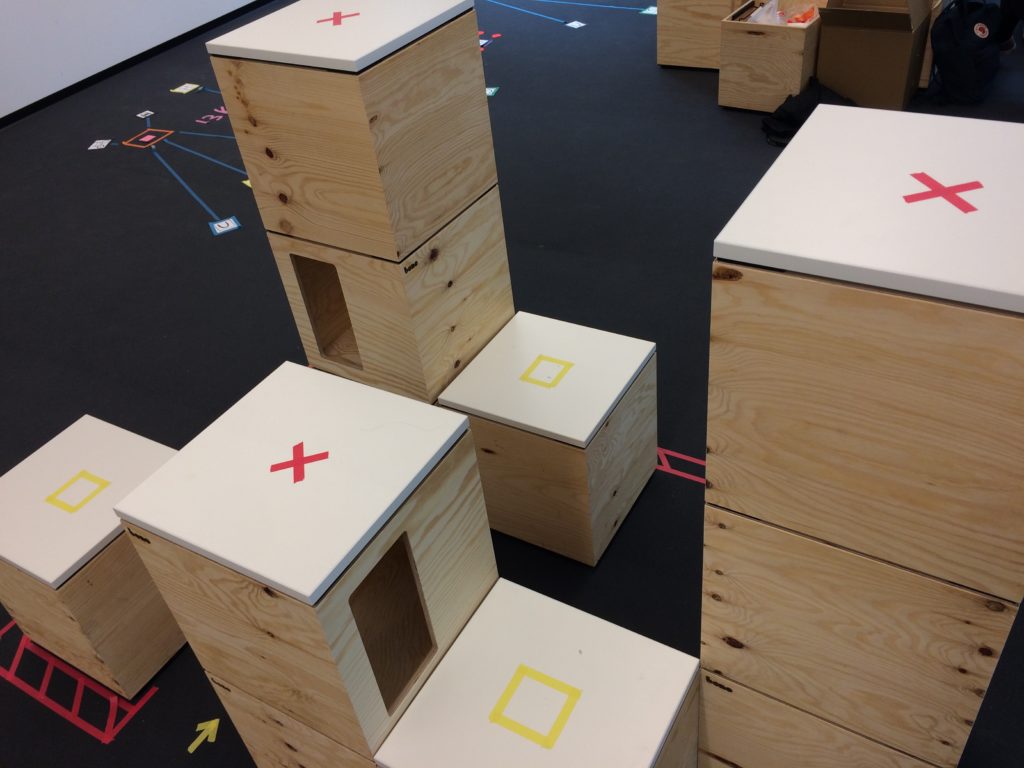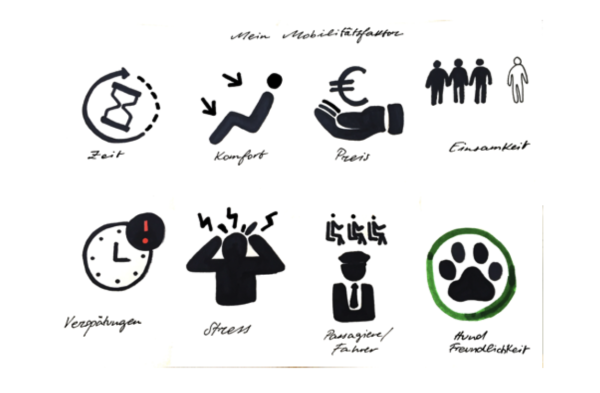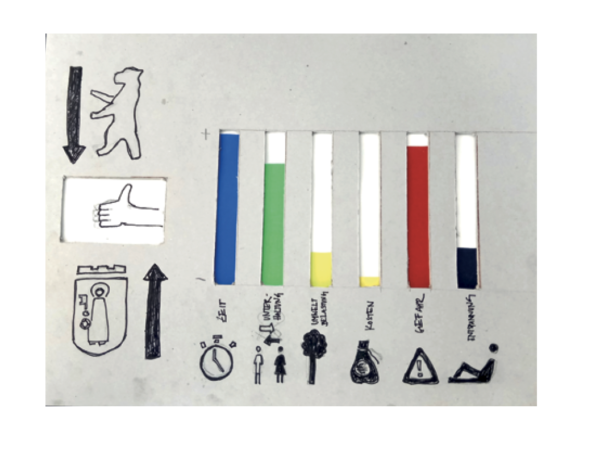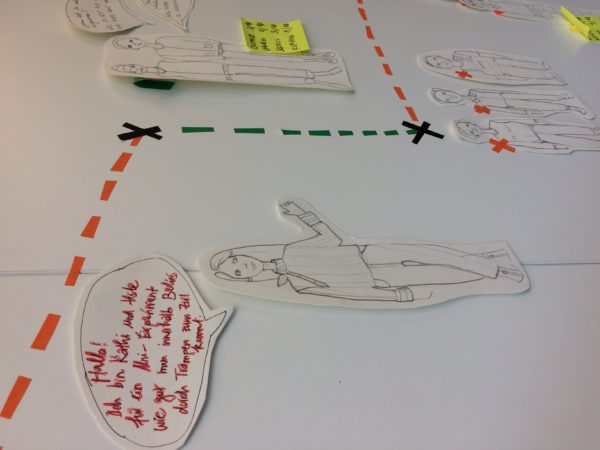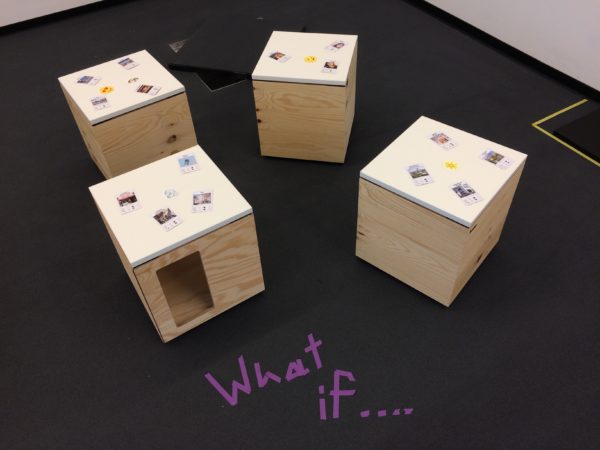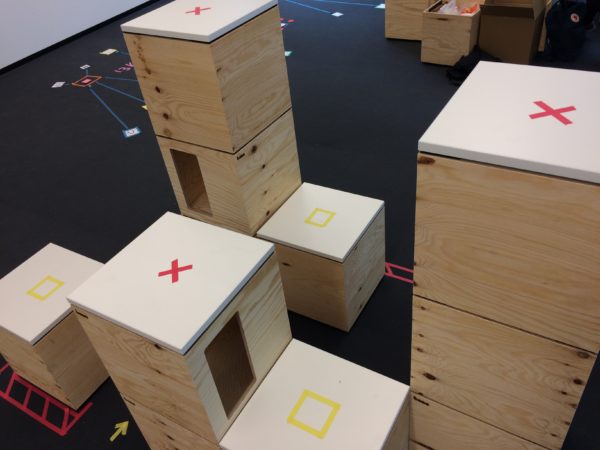How to prototype Open Source Mobility? A group of industrial design students from the University of the Arts Berlin conducted experiments about micro mobility in public space in a weeklong design methods seminar and offers interesting insights to the practicality of mobility modes.
The aim of the course was to use and adapt design research methods for the investigation of everyday routines and common behaviour of commuting throughout Berlin and beyond. After analysing their own decision making patterns in daily planning of modalities such as routes, time schedules and vehicles the students developed prototypical tools to measure and compare varieties of mobility factors such as time, costs, efforts as well as more emotional or individual factors such as compatibility with the dog, statistical and perceived safety or claustrophobic necessity of space. The results of the experiments in public space were presented as spatial installations at the Open Source Lab.
Mobility Factors
In order to realize the role mobility plays in students’ lives, mapping as a method was adapted by a group of students. In this way, it was possible to show which places span their network of mobility. The mapping included the type and frequency of the places regularly visited. Some students have also included the places they would like to visit if external factors such as time, money, etc. allowed it. The method served to raise awareness of the fact that mobility is not only limited to the completed paths but also includes the unimplemented spaces of possibility. Once again, each student developed his or her own system for visualizing a unique mobility scheme. Ana, originally from Brasil, has decided to mark the everyday routes she travels in the city on a map according to the mode of transport and frequency. Ronja has subdivided her mobility behaviour according to the places in town, country and worldwide that she can and wants to reach.
Research to date has shown that many factors determine how mobile we feel. Some of those criteria by which people assess their mobility have been laid out in this course. The next step was to identify the factors by which different mobility options in everyday life are compared and evaluated. This exercise showed that some criteria are not so easy to measure and that the categories need to be further differentiated for an accurate assessment. For example, costs can be compared very easily on the surface, whereby indirect costs such as the purchase or wear and tear of one’s own car are seldom included in the calculation. The «danger» factor also proved to be critical in the subsequent discussion. Rather, this factor would have to be distinguished once again between real or statistical danger and subjectively experienced threat. Katharina has developed a barometer for evaluating her mobility options, in which all options can be scaled by different people. Marilia, an exchange student from Greece, has added compatibility with her dog to the evaluation criteria.
Scenarios
What if our ideas actually came to be true? Have we thought our visions sufficiently through? What consequences would they have? How would the cityscape and social structures change through the implementation of those futures?
After all, we want to help shape the future with our ideas and designs. The future scenario cannot only be used to propagate desires but can also scale fictions and point to potential consequences. What would urban infrastructures look like if society was more interested in getting through the city with a dog than a car? How would the cityscape change if everyone carried their own food with them at all times? How important would personal space be if private transport no longer existed?
Into the Wild – Experiments in Public Space
The experiment in research is a more or less clearly defined experimental set-up, which should confirm or refute predefined theses. In design, the experiment can also help to follow openly formulated hypotheses and develop a better understanding through personal experience. In the experiment, the students should examine how the criteria of their theoretical consideration prove themselves in practice and by which aspects their theories can possibly be supplemented. Alexander devoted himself to the phenomenon of mass mobility and specifically exposed himself to local public transport at rush hour. Always striving to follow the largest crowd of people, he observed the behaviour of individuals and the group as such. He supplemented the systematics of the project with subjective observations. These led him to consider not avoiding peak times, but rather setting up infrastructures in such a way that swarm behaviour – perceived as safe and low-interference – is supported and individual road users can be easily directed to their desired destination by «swimming with the tide». Ronja has dealt with the possibilities of the modal split in Berlin. In a self-experiment, she chose as many means of transport as possible for different everyday routes and examined them for flexible possibilities of deviation. She registered with car and bike sharing platforms and used the real-time mapping of the VBB. Her evaluation shows both the number and the accessibility of the different modalities. Katharina wanted to find out whether she could once hitchhike her way to the university across the city centre of Berlin. She has thumbed a lift before in her life, but not often and only over long distances on the motorway. She not only likes the fact that she gets from A to B cheaply, but also that she starts the journey with a completely different motivation. She can’t plan how long she’ll need and what to expect on the way. The journey becomes a journey of encounters and conversations. Often the drivers are happy to be accompanied on the boring motorway stretches. The city is another story for hitch-hiking. Katharina has recorded both the distance covered and the positive and negative encounters. The evaluation also included factors such as perceived safety, communication and obstacles of the drivers or those who did not want to take her onboard. In the mutual discussion after the experiment, consequential questions arose for Katharina: What would change if the private sector commercialized hitchhiking? What are the differences between hitch-hiking and ridesharing like UBER offers? Is it simply about data or about culture? What positive effects can be applied to other modalities?
Spatial Installations
How can a research process that answers a subjective question be manifested and made tangible in the Open Source Lab? The students were given the opportunity to use the premises on site in order to gain a relevant experience and communicate findings tangibly with the public. In his experiment, Alexander has identified rush hours and the swarm behaviour of large crowds. Throughout his work, the subject of privacy and personal space reappeared. If it becomes too narrow, people isolate themselves through a kind of inner immigration. To visualize this observation, he built a walk-in room installation that concedes just as much space to the visitor as a well-filled subway. Then he watches the people in the installation referring to or delimiting each other. Marilia staged a public waiting situation for people as well as for dogs to show how infrastructures in the city can still be thought differently and universally inclusive. Ana used a large mapping to assess the food situation on the EUREF campus highlighting opportunities to eat.
Outlook
We have presented the work of the students here only in part. The focus of the seminar was to integrate real situations into the project research and to research everyday situations. What emerged for us were enriching approaches that critically question the topic of urban personal micro mobility and renegotiate social principles. Potentially some questions can be taken up and developed further in the research scope of Open Source Mobility.
Text by Miriam Lahusen, edited by Susanne Ritzmann
